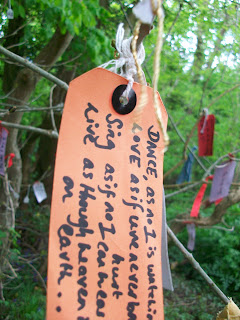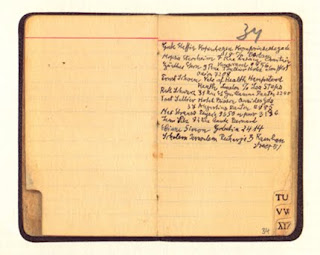
5:30 am - I leave my bed with the greatest reluctance. I'm sick with an upper respiratory infection that will ultimately only be banquished thanks to a hefty dose of antibiotics, and the day of our second Quarter is when the dread lurgy really takes hold. I am snotty, wheezy, and whiney, but nonetheless I head out into a world that is warm, moist, misty and pulsating with life. Astonishingly, the cold, hard winter really does seem to have broken on the first day of spring. The birds are jubilant; they too can feel the warmth working through the winter-cold earth. As we head towards the village, Sian and I can sense the resurgence - at last - that herald's spring.
Next week, on March 29, will be the Sugar Moon - a North American name for the moon that coincides with the time of year when the maple trees are tapped. The sap is rising. Sick and phlegm-filled as I am, I feel it too. My body yields a little, opens. I lift my face into the damp morning air.
5: 50 am - The Cottage is dark when we arrive; the bedroom window open. We call out, and Johnny's torso emerges. "Good morning, good morning! Be right down..." We are strung about with bags, waterproofs, Wellington boots, notebooks and cameras. A day in the field. No pack animals. Just pockets full of tissues, lip balm, notebooks, pencils, tobacco, sanitary towels, an apple, throat lozenges, a thermos of tea... Not too many layers today, but thick socks and tall boots. The ground is sodden.
6:04am - Sunrise. We beat the boundaries of the wood. Along the stream to the furnace pond and the old road. No sign of the sun, again, today. Just warmth and the clamour of the stream, full and rushing with almost unseemly haste, drowning out the dawn chorus. Below the hammer pond, Johnny and I paddle. The sandstone rocks are slippery and streaked with red iron ore. There is a shallow crescent of gravel, then the bank rises. Clay and sandstone, steep-sided, cut by the stream's insistent surging - an overhang trailing a filigree of roots, bright green with mould, bearded with moss and lichen. The smell of the earth-bank is fetid, fervent, rich, replenishing. We dig out nuggets of charcoal and slag, crumbling the fine earth with our fingertips, childlike as we look for treasure. Grubby hands now. Earth and charcoal beneath our fingernails.
We walk the high-road back to the Cottage and there eat hot cross buns, hard boiled eggs, anchovies and strong tea - my family's bastardised version of a Slavic Pascal feast - somehow seems appropriate for the vernal equinox.


































